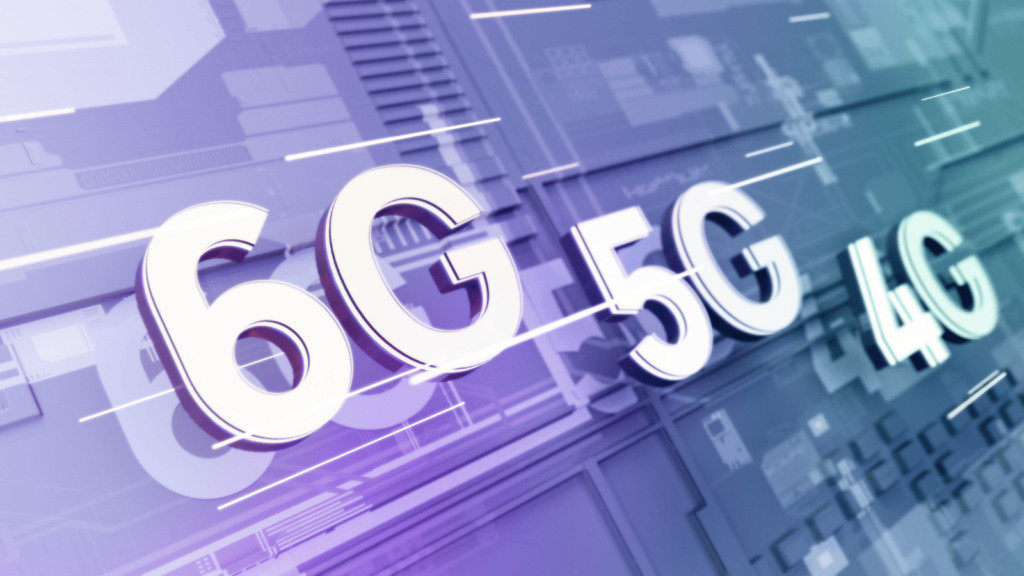The race for next-gen connectivity is heating up, and it’s not just about 5G anymore. While 5G has made waves with its lightning-fast speeds and low latency, the tech world is already buzzing about what’s next. Enter 6G—an evolution that promises to redefine how we connect, communicate, and interact with technology.
Companies like Nokia, Huawei, Ericsson, and Samsung are not merely keeping pace; they are sprinting toward this new frontier. With innovations on the horizon that could transform industries from healthcare to entertainment, it’s clear that brands recognize the urgency of adapting to an ever-changing digital landscape.
So what lies beyond 5G? What can we expect from this groundbreaking technology? Let’s delve into the evolution of mobile networks and explore why everyone is eagerly racing towards 6G.
Understanding the Evolution of Mobile Network Technology
Mobile network technology has come a long way since its inception. The journey began with 1G, which introduced basic voice calls but lacked data transmission capabilities. It was revolutionary at the time, laying the groundwork for future advancements.
With the arrival of 2G, text messaging became possible, opening up new avenues for communication. This era also saw the introduction of digital encryption and improved call quality.
Then came 3G, enabling mobile internet access and transforming how we consume content. Users could browse websites and download files on their devices—an early glimpse into today’s connected world.
4G pushed these boundaries further by offering high-speed internet that made streaming services widespread. Now we’re experiencing 5G’s transformative potential with enhanced speeds and connectivity options. As this landscape evolves rapidly, it sets the stage for even more groundbreaking innovations on the horizon—specifically 6G technology poised to change everything once again.
What is 5G and its Capabilities?
5G, or fifth-generation wireless technology, represents a significant leap from its predecessor. Designed to meet the growing demands for speed and connectivity, it offers remarkable enhancements in data transfer rates. With peak speeds reaching up to 10 Gbps, users can download entire movies in seconds.
Latency is another standout feature of 5G. This network operates with nearly instantaneous response times as low as one millisecond. Such efficiency opens doors for real-time applications like remote surgery and autonomous vehicles.
Moreover, 5G supports an extensive number of devices simultaneously without compromising performance. Its infrastructure allows approximately one million devices per square kilometer, paving the way for smart cities and IoT innovation.
This next-gen connectivity isn’t just about faster downloads; it’s also about empowering industries with new possibilities that were previously unimaginable. The impact resonates across various sectors including healthcare, entertainment, and manufacturing as they begin to harness its capabilities.
The Limitations of 5G and the Need for Further Advancements
5G has undoubtedly transformed mobile connectivity, but it isn’t without its shortcomings. While faster speeds and lower latency have been achieved, coverage remains spotty in many areas. Urban centers enjoy robust service, while rural regions often lag behind.
The massive data demands of emerging technologies like IoT and smart cities outstrip 5G’s current capabilities. As more devices connect to the network, congestion can become a significant issue.
Moreover, security threats are amplified as networks expand. The complexities of protecting vast interconnected systems present challenges that 5G is not fully equipped to handle.
As brands invest in next-gen connectivity, they recognize the urgency for further advancements beyond what 5G offers today. They need solutions that will sustain future growth and innovation across various industries.
Introducing 6G: What It Offers and When We Can Expect It

6G is set to redefine our concept of connectivity. While 5G brought speed and low latency, 6G aims to elevate this experience by integrating artificial intelligence at its core. Imagine networks that can learn from user behavior, optimizing performance in real-time.
This next-gen technology promises incredible data rates—possibly exceeding 1 terabit per second. That’s more than just fast; it opens doors to innovations like holographic communication and immersive virtual experiences.
Industry leaders such as Nokia and Ericsson are already laying the groundwork for these advancements. They predict initial trials could start around 2028, with full-scale deployment shortly after.
This timeline may seem distant, but tech enthusiasts should be prepared for a transformative leap ahead. As companies strategize their next steps, the race toward seamless integration of devices will only intensify.
How Brands Are Preparing for 6G and Its Impact on Industries
Brands are already strategizing for the next leap in mobile technology. Companies like Nokia, Huawei, Ericsson, and Samsung are investing significantly in research and development to lay the groundwork for 6G connectivity.
They recognize that 6G will not just enhance speed but also revolutionize how industries operate. The focus is on ultra-reliable low-latency communications (URLLC) that can transform sectors such as healthcare, manufacturing, and transportation.
For example, telemedicine could see breakthroughs with real-time data transfer allowing remote surgeries. Meanwhile, smart factories may harness 6G to achieve seamless machine-to-machine communication.
Tech giants are also collaborating with governments and academic institutions. This partnership aims to standardize this next-gen connectivity while addressing potential challenges early on.
Such proactive measures ensure companies stay ahead of the curve as they prepare to integrate advanced technologies driven by 6G capabilities into their operations.
Challenges and Opportunities in Implementing 6G
Implementing 6G brings both challenges and opportunities that are critical for brands like Nokia, Huawei, Ericsson, and Samsung. One primary challenge involves the need for entirely new infrastructure. Upgrading from 5G to 6G requires significant investment in technology and resources.
The spectrum is another hurdle. As demand escalates, competition for bandwidth intensifies. Companies must innovate to manage these limitations effectively.
However, with challenges come vast possibilities. Enhanced connectivity can revolutionize industries by enabling real-time data processing and ultra-reliable communication tools. This opens doors for advancements in areas such as autonomous vehicles and smart cities.
Collaborative efforts among tech giants will be crucial too. Partnerships can accelerate development timelines while pooling expertise to tackle technical obstacles head-on.
As stakeholders navigate this landscape together, they stand on the brink of groundbreaking innovations that could redefine everyday life through next-gen connectivity.
The Future of Mobile Networks Lies Beyond 5G with
The landscape of mobile networks is continuously evolving. As brands like Nokia, Huawei, Ericsson, and Samsung lead the charge into next-gen connectivity, the focus shifts beyond 5G. The potential of 6G promises transformative capabilities that will redefine user experiences across various sectors.
With advancements in artificial intelligence and machine learning set to play a crucial role, we can expect an even more integrated environment where devices communicate seamlessly. Industries ranging from healthcare to entertainment are preparing for this shift by investing in research and development focused on 6G technologies.
As the race toward 6G intensifies, it’s clear that companies must adapt quickly to harness its full potential. While challenges remain—such as infrastructure upgrades and regulatory hurdles—the opportunities presented by 6G could be monumental.
Brands are not simply waiting for change; they are actively shaping what comes next. The future of mobile networks extends far beyond our current expectations with innovative solutions on the horizon. With every advancement made today paving the way for tomorrow’s connectivity, there’s much more ahead than just faster download speeds or lower latency—it’s about creating a smarter world connected through technology yet unseen.




